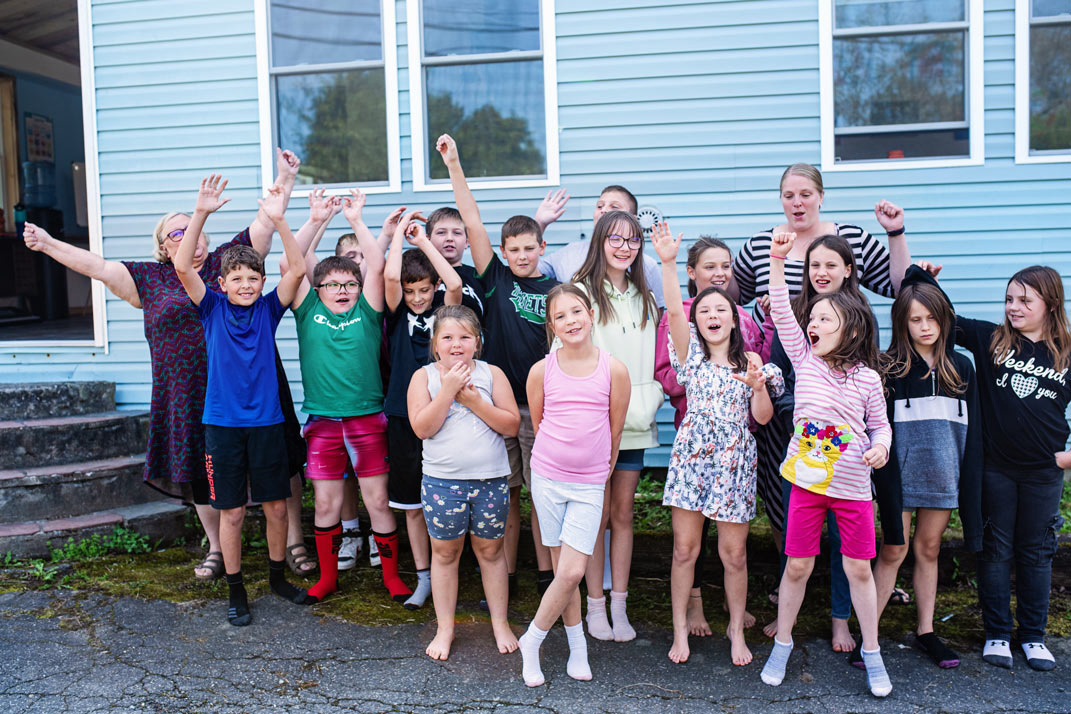What is a Microschool: Everything You (and Your Child) Need to Know in 2024
As a parent, choosing the right educational approach for your child can be daunting.
With so many options available, it can be hard to know where to start.
Two approaches to consider are microschools and homeschooling.
Microschools offer a unique blend of small classroom settings with personalized learning, while homeschooling provides individualized education directly managed by parents.
In this blog post, we'll dive into the benefits and challenges of each approach to help you make an informed decision for your child's education. Whether you're looking for a more personalized approach to education or a smaller classroom setting, we've got you covered. Let's get started!
What is a microschool?
A microschool is a small learning environment that usually serves under 15 kids. As one of the nation's largest microschool providers, here at Prenda, we recommend 10 students per microschool. However, some people say a microschool is any school that has fewer than 100 kids. Regardless of exact size, these small schools operate in various settings, including homes, community centers, or rented spaces. Most microschools emphasize personalization and flexibility and take a student-centered learning approach, but any pedagogy can be used.
How is a microschool different from other schools?
In contrast to traditional schools, microschools enable a higher degree of personalized education and can foster closer relationships between students and teachers. They often lack the bureaucracy and rigid structure of public and many private schools, prioritizing innovative and adaptable learning strategies.
Is microschooling the same as homeschooling?
While microschooling and homeschooling share some similarities in providing personalized and flexible educational options, they differ in several key ways.
Degree of Shared Responsibility
While parents should always retain ultimate and absolute responsibility for their children, they often opt for learning environments with different degrees of shared responsibility regarding their children’s education.
When your kids attend a traditional school, you play a supportive role but aren’t delivering content or making decisions about what and how your kids learn. Responsibility is mostly placed upon the teachers and school.
On the other end of the spectrum, homeschooling parents assume full responsibility for their children's education and typically provide the bulk of the instruction, incorporating external classes or other teachers as needed.
A microschool is a middle point where parents have a strong voice in what and how their children learn and play an important supportive role in continuing and deepening learning at home. However, unlike homeschooling, they aren’t responsible for the bulk of instruction. This responsibility is shared with a microschool guide that the parent chooses and collaborates with.
Consistency and Structure
While the structure of a homeschool day varies widely from family to family, homeschool families typically enjoy a relaxed, less-structured day while they learn and work together. Sometimes, if consistency and structure are desired, a great deal of energy from the parent is required to create them at home.
Microschools offer a slightly more structured approach. Kids get up at a specific time, get ready for school, and get out the door each day as with traditional school, but families work together to decide what time and what days of the week the microschool meets (for example, my kids start at 9:15 and attend 4 days a week so we still enjoy a slow family-centered morning). While kids are expected to attend the microschool each day, if they need to work from home for a day or miss due to family events, it isn’t an issue.
Social Interaction
The degree and type of social interaction that parents want for their kids varies widely.
Homeschooled kids develop rich relationships with their siblings and parents and add additional opportunities to engage socially through a wide range of community-based activities chosen by kids and parents.
Microschools offer a consistent community of near-aged peers while still allowing families to spend more time together than with traditional education. Microschools also create a built-in, tight-knit community for parents.
Educational Philosophy
Microschools often have a specific educational philosophy or approach guiding their programs, while homeschooling allows parents to entirely tailor the education process based on the child’s needs and interests. If microschooling is an interesting option to you, you’ll want to make sure the learning approach and culture of the microschool you select support your goals as a parent.
Why smaller is sometimes better
With flexible schedules and tailored curriculums, microschools cater to the interests and pace of individual students, benefiting children with specific learning needs or specific interests. This is nearly impossible to do in a large brick-and-mortar school. In a normal-sized school, decisions have to be made to fit the “majority” of kids and remain in alignment with what legislators have decided kids should learn. Typically decisions that are made for everyone aren’t really good for anyone. Over the past several years, we’ve surveyed incoming Prenda students about their pre-Prenda experience. Year after year, nearly 2/3rd of kids report that they were either bored or lost at school before starting their microschooling journey.
With microschools, kids can be seen as individuals because it’s much easier to accommodate the needs of 10 kids and a handful of parents as opposed to hundreds of kids and parents.
How did microschooling start?
Microschooling is what everyone used to do!
We had small towns and families spread out on farms- several families would come together and pay a teacher to lead a small group of age-mixed kids. We called this “the one-room schoolhouse.”
If the parents didn’t like what the teacher taught, they were fired, and a new teacher was brought in. When the Industrial Revolution occurred, and people moved off of farms and into cities, public education was established and formalized, classes got big, and parents lost control. Things haven’t changed much since then. With microschools, we are getting back community-driven grass-roots education that meets the needs of the individuals instead of the masses.
And unlike the one-room schoolhouses of the 1800s, today’s microschools are warm, inviting, and both physically and emotionally safe.
Are there online microschools?
Yes, online microschools exist. These platforms offer remote education through digital platforms, retaining the characteristics of physical microschools, such as small class sizes and personalized learning. Using video conferencing tools and collaborative software, online microschools create interactive and engaging learning environments.
But in our opinion, there’s nothing that replaces in-person learning, especially for K-8th graders.
Are microschools effective?
This is both hard to define and hard to measure.
What does “effective” mean? Who gets to decide?
If a child is academically on grade level but they are an anxious wreck, has the learning environment been “effective?” Do standardized tests define what “effective” is, or does success have more to do with how a student uses their skills and knowledge in the real world?
If we’re talking about academic growth, motivation, engagement, and mental well-being, yes, microschools are effective.
The best summary of this success is probably Prenda’s data about the progress thousands of kids nationwide are making in both academics and in what we call “empowerment” as they microschool. Read more here.
How can I start my own microschool?
There are a few ways to go about starting your own microschool!
For a deep dive, check out our other post about how to get started or take our free mini-course: The Beginner’s Guide to Microschooling.
If you’re ready to start a microschool and want Prenda’s help to do it, just go to prenda.com and click “Start My Microschool.” We provide a K-8th student-centered curriculum, so you don’t have to reinvent the wheel. We also help you market, manage, and fund your school, all while providing a supportive and enriching community and ongoing personal/professional development.
We’ve helped over 1,000 people start microschools over the past few years, but many other microschools have started as well! If you have a passion for education and love kids, you can absolutely create an amazing educational experience for kids in your community!
Is it easier to start a microschool in certain states?
While there are likely microschools in every state, some states like Utah, Florida, and Arizona have legislation on the books that make things a little easier for microschool founders, including funding programs that allow families to use state funds to pay to attend your microschool. More and more states are passing legislation to facilitate microschools every year. Learn more about these programs here.
How can I enroll my kids in a microschool?
To find a Prenda microschool, go to prenda.com/find-a-microschool. Here, you can search for microschools near you.

.png)

 Share on Facebook
Share on Facebook
 Share on Twitter
Share on Twitter
 Share on LinkedIn
Share on LinkedIn
 Share on Pinterest
Share on Pinterest

.svg)





.svg)






